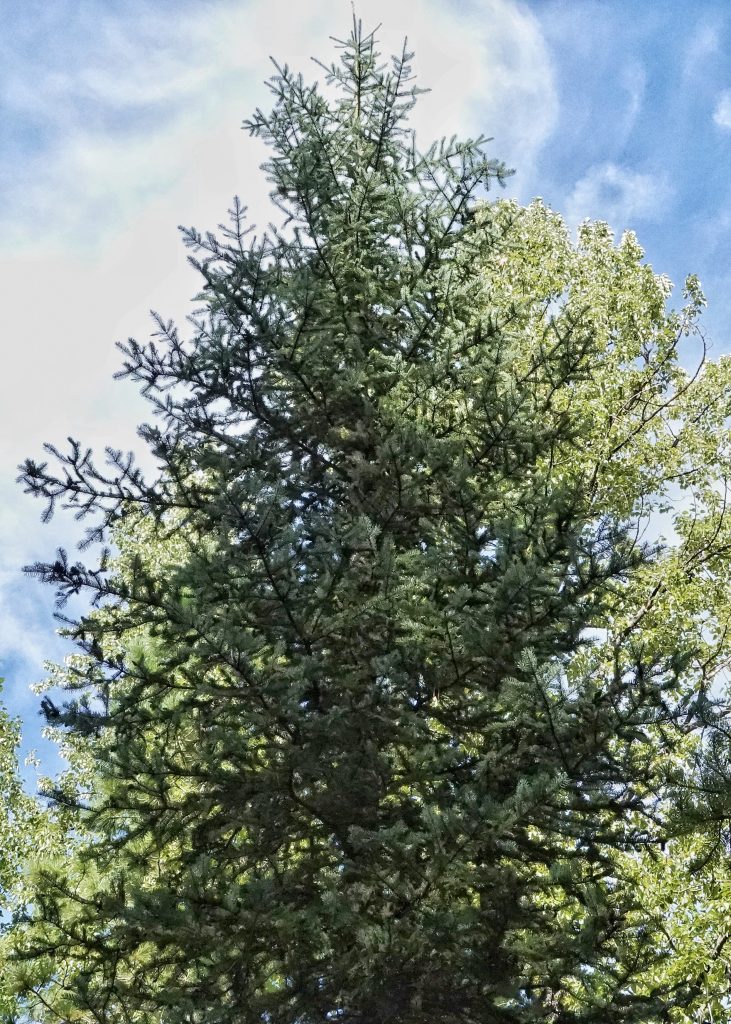
Next up for the conifers is our first spruce. Engelmann Spruce is actually a very easy tree to identify. First off, spruces in general are easy to separate from other conifers because they have persistent needle bases (called pulvini or sterigmata) which leave small, but very obvious, peg-like projections when the needles fall off. No other conifers with singular needles have such prominent sterigmata, although hemlocks have very minor ones that are mostly just a ‘roughening’ of the twig.
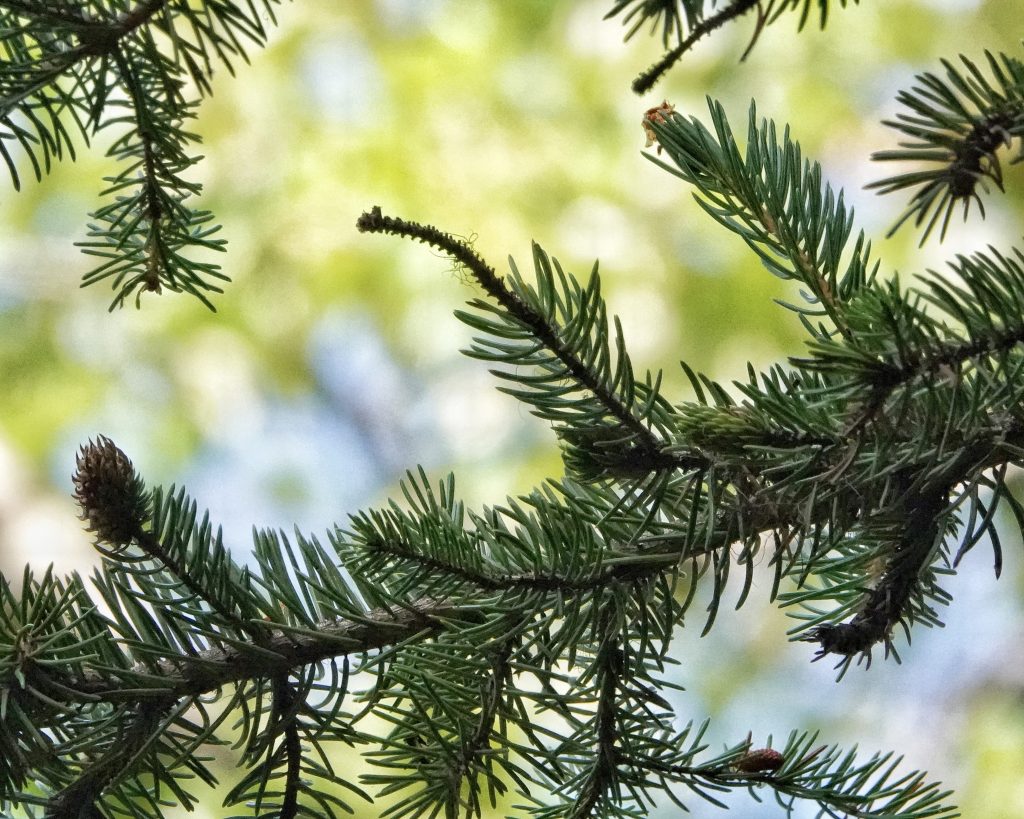
The only other spruces we have in our region are Sitka Spruce and Brewer’s Spruce, and Sitkas are coastal trees, while Brewer’s are found in sw Oregon/nw California, whereas Engelmann Spruce is an inland, montane species. But it is possible they could overlap in the Siskiyous (Brewer’s) and western Cascades near the Puget Sound (Sitka) (although range maps do not show them overlapping anywhere), so it could be helpful to know that Engelmann Spruce has mostly horizontal branches, while Brewer’s spruce has mostly vertical, drooping branchlets, and Engelmann Spruce have 4 sided needles that roll easily between thumb and forefinger, while Sitka have triangular needles that do not roll easily.
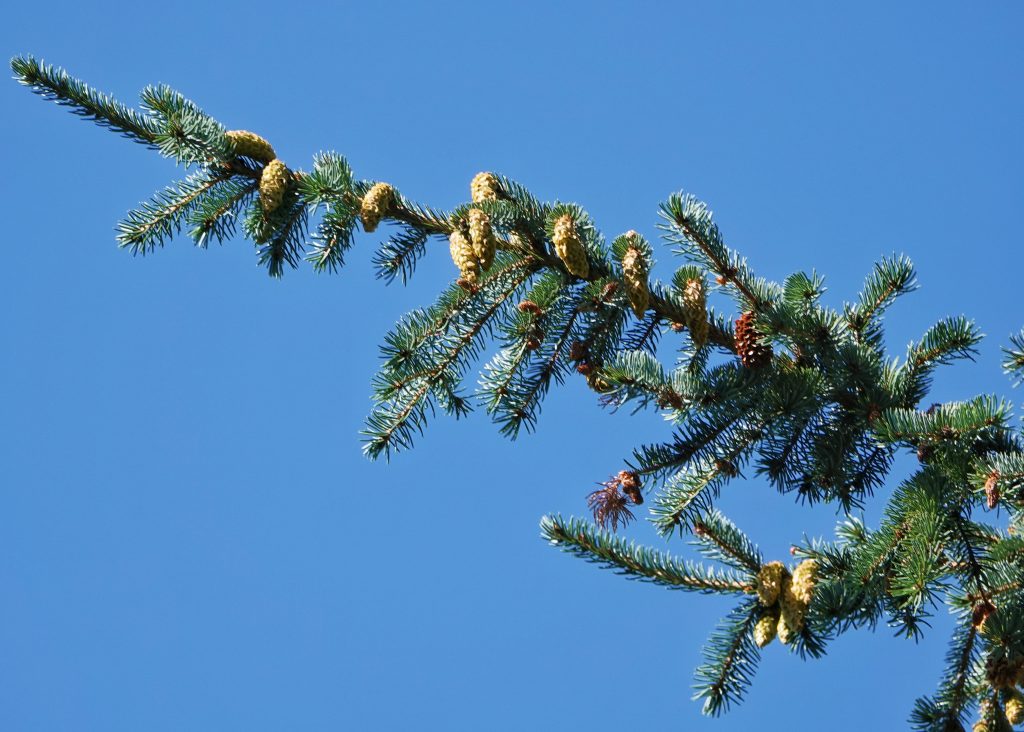
For the most part Picea engelmannii is a tall, straight, narrow tree, with much space between the branches at the top of the tree. But there are alpine populations that form krummholz (a stunted, gnarled form of a variety of vegetation caused by continual exposure to high winds and freezing temperatures). And at extreme elevations Engelmann Spruce is known to develop ‘traveling krummholz’ where the side of the tree sheltered from the wind by the tree itself continues to grow, while the exposed side dies from desiccation and the scouring of wind blown ice crystals, so that the tree moves downwind, with dead wood in its wake.
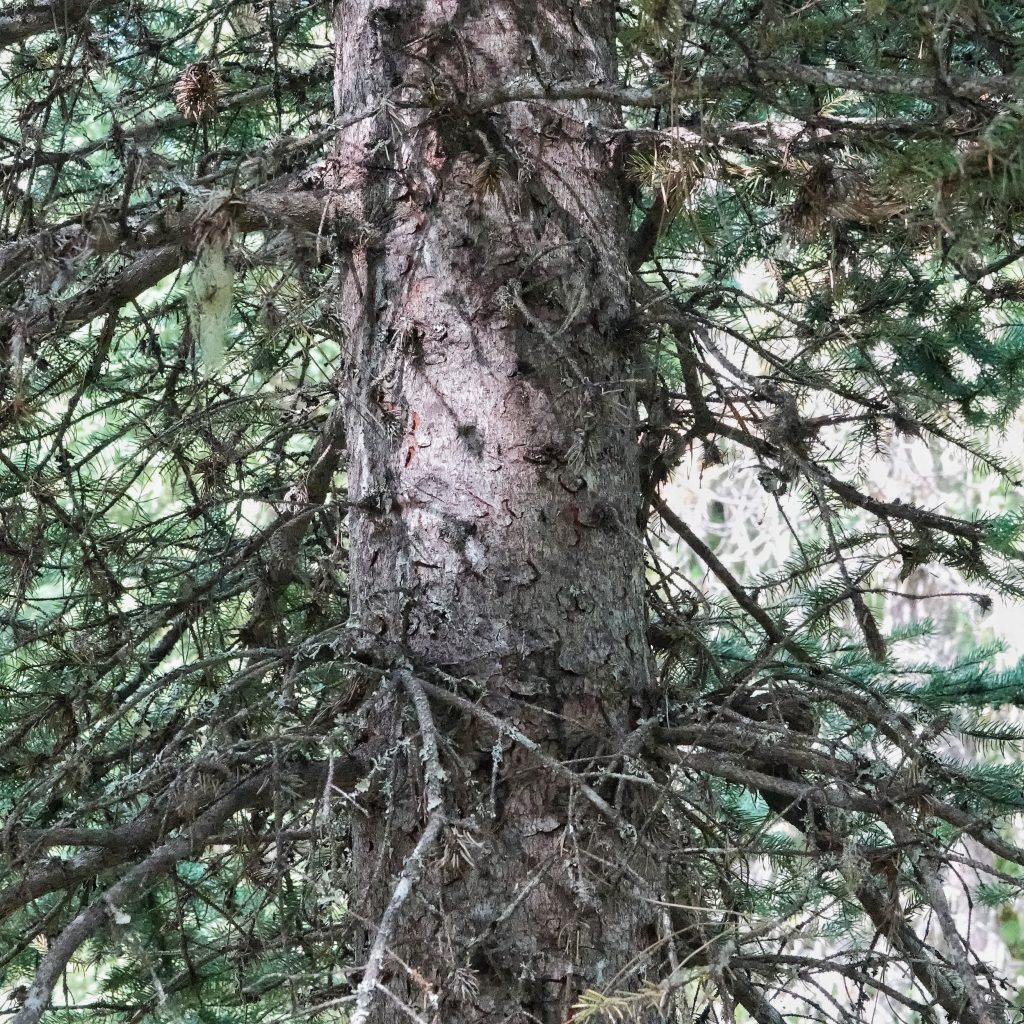
This is a very shade tolerant tree, and does well in the understory until gaps are opened to let in light. But it is not a fire resistant tree, due to its thin bark. Growing in or near wetlands probably protects it from low intensity blazes, and the wind borne seeds of trees that do survive harsher fires usually produce seedlings in the burned areas within 5-10 years.
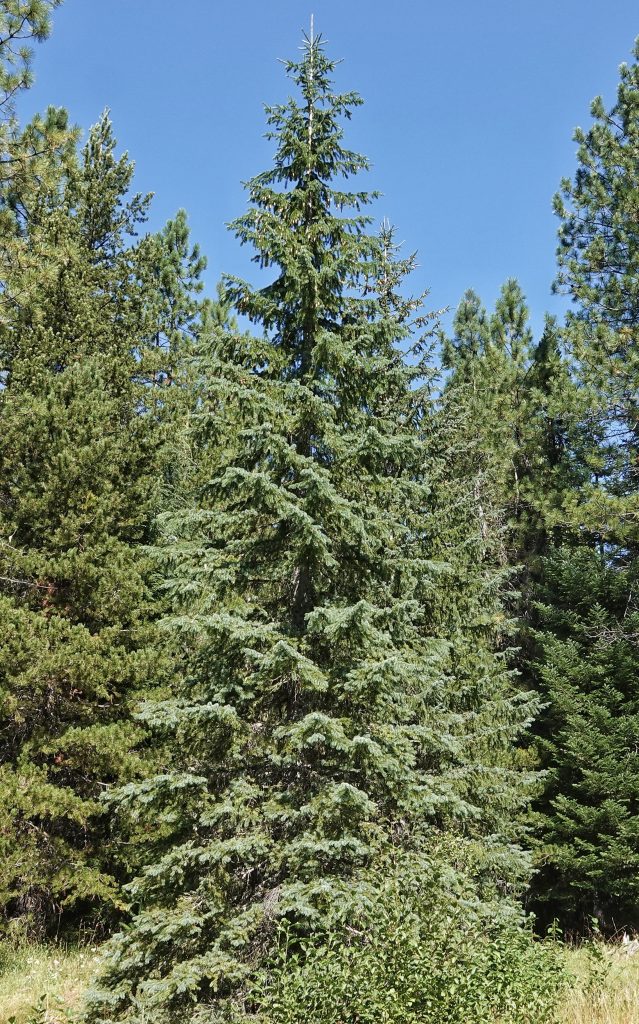
Engelmann Spruce is logged for dimensional lumber and paper pulp, and is utilized as the soundboard in some stringed instruments. Indigenous cultures of the west made tea from the branches, as well as a form of soap. The pitch could be chewed as gum and for emergency food, and was used to treat eczema, and a decoction of pitch and needles was used to treat cancer. The bark was used to treat tuberculosis and other respiratory ailments. The wood was used for construction, as roofing shakes, and for the making of toys and utensils. The bark was utilized to cover canoes, make baskets, and to thatch roofs. Roots and limbs were shredded and pounded, and then braided into cordage.
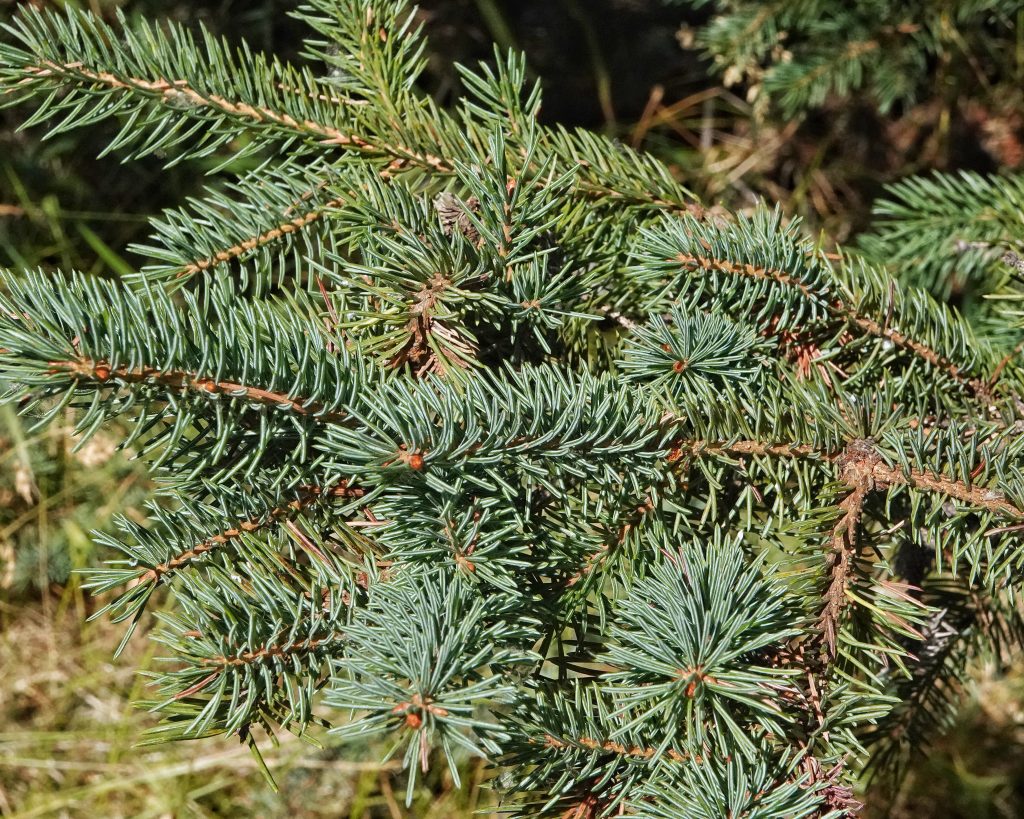
Description-Large (may be over 200’ tall and 4.5’ in diameter, but usually less than 120’ tall and 3’ in diameter) conifer, with pointed and fairly stiff needles that are 4 sided, have stomatal bloom on all four sides, and are arrayed all the way around the stem; new growth is often blue green (glaucous); branches are mostly horizontal, and are well spaced near the crown; cones are pendant, flexible, less than 4” long, and have a ragged apex to their scales; bark is thin, scaly, reddish or purplish brown to grey.
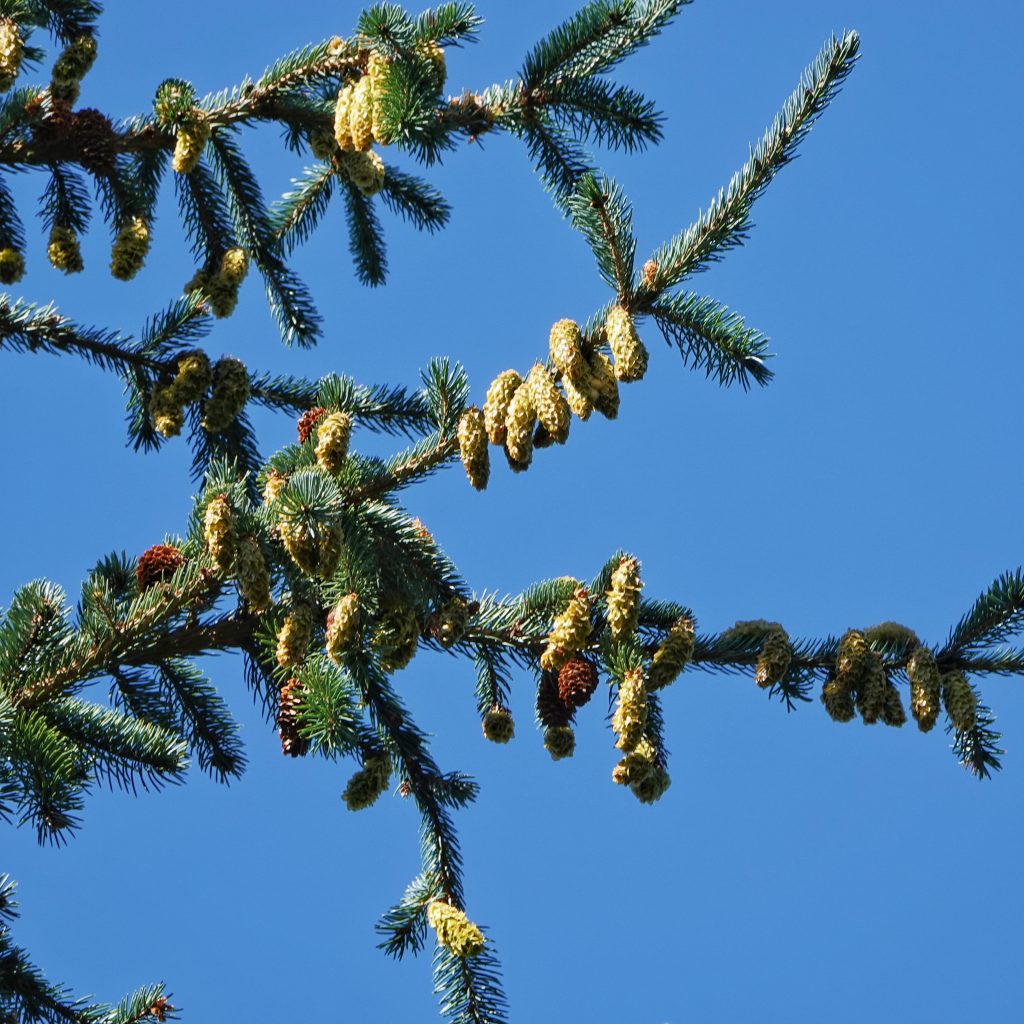
Similar species-Sitka spruce has triangular needles, is not found above 3,000’ elevation, and is not found more than 50 miles from the ocean; Brewer’s spruce has stiff cones with smooth apex to the scales, needle bearing branchlets hang straight down, and it is only found in sw Oregon, nw California; true firs have erect cones, lack peg-like projections from shed needles.
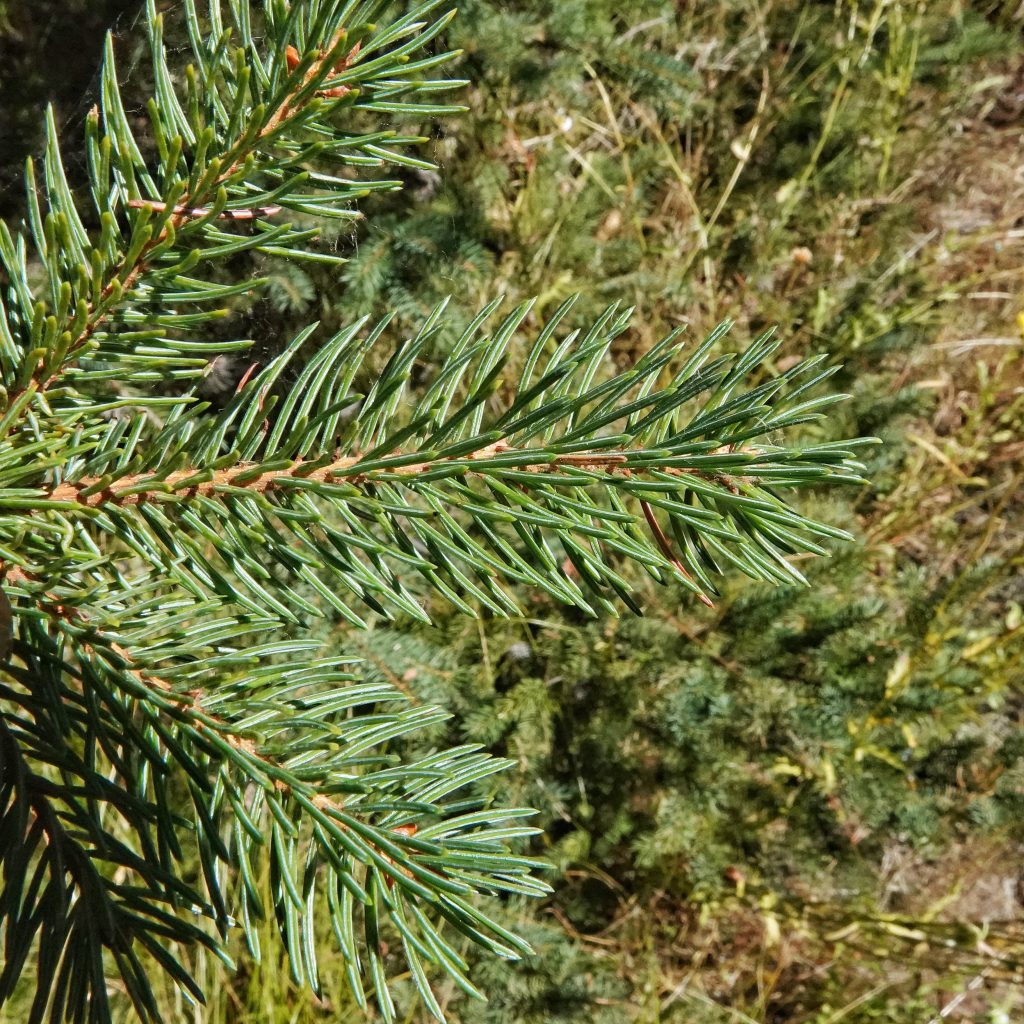
Habitat– On the margins of wetlands and other vernally wet locations above 2500’ elevation.
Range-Western North America; in our region it is found primarily in the Cascades, Blues, Wallowas, and in the Rocky Mtns and it’s associated spur ranges; present but rare in the Coast Range and Olympics.
Reproductive timing– Cones mature in one season, ripen by mid-August, sheds seed until October, and fall over the winter.
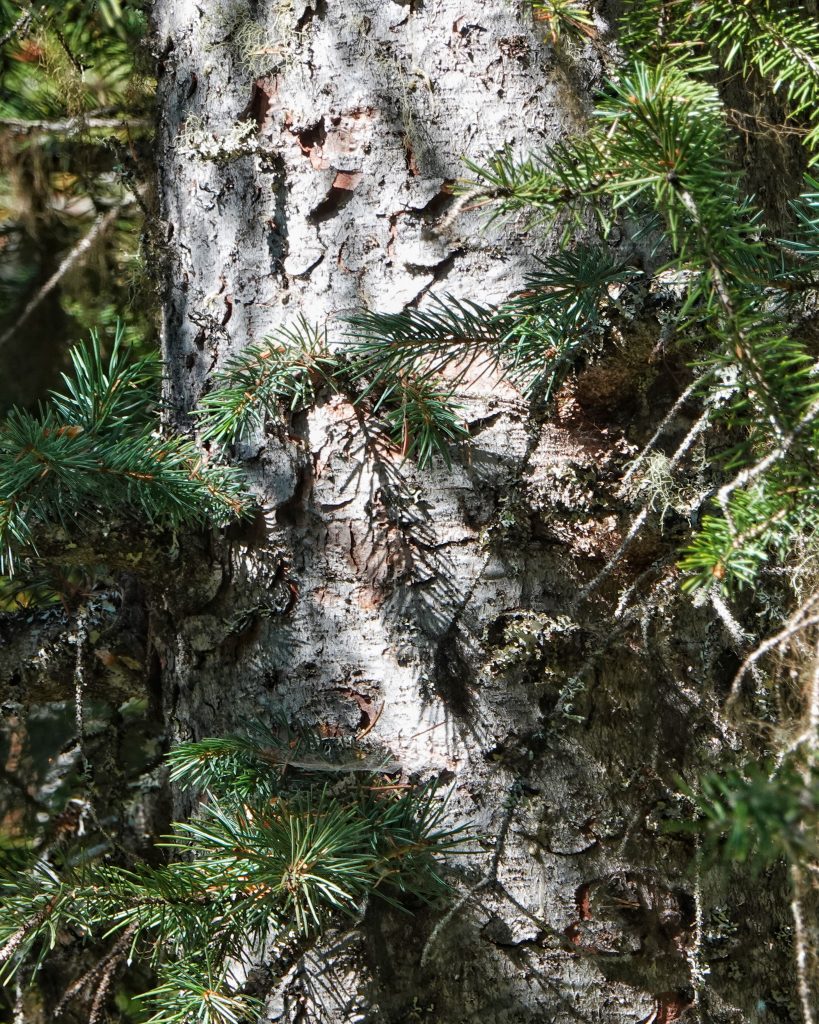
Eaten by-Larval host for the bark beetles Trypodendron lineatum, and those in the genus Dendroctonus, the longhorn beetles Etorofus obliteratus and E. propinquus, Opsimus quadrilineatus, Phymatodes spp., Pogonocherus penicillatus, Rhagium inquisitor, Tetropium parvulum, and Xestoleptura tibialis, and the weevil Pissodes strobi; larval host for the Siricid wood wasp Sirex varipes; larval host for many moths, including but far from limited to, Lambdina fiscellaria, Dioryctria abietivorella, Caripeta divisata, Cladara limitaria, Enypia griseata, E. venata, Epirrita pulchraria, Eupithecia albicapitata, E annulata, E. casloata, Gabriola dyari, Tetracis pallulata, Zenophleps lignicolorata, Dasychira grisefacta, Syngrapha celsa, Lithophane innominata, Melanchra pulverulenta, Synanthedon novaroensis, Argyrotaenia dorsalana, Choristoneura freemani, C. fumiferana, C. lambertiana, Clepsis persicana, Eucopina sonomana, and Taniva albolineana; Elatobium abietinum aphids; adults and nymphs of the Great Grig, Cyphoderris monstrosa eat the male cones; rust fungi in the genus Chrysomyxa; White-winged Crossbills, Clark’s Nutcrackers, Red-breasted and Pygmy Nuthatches and other birds eat the seeds, as do squirrels, ground squirrels, chipmunks, etc.
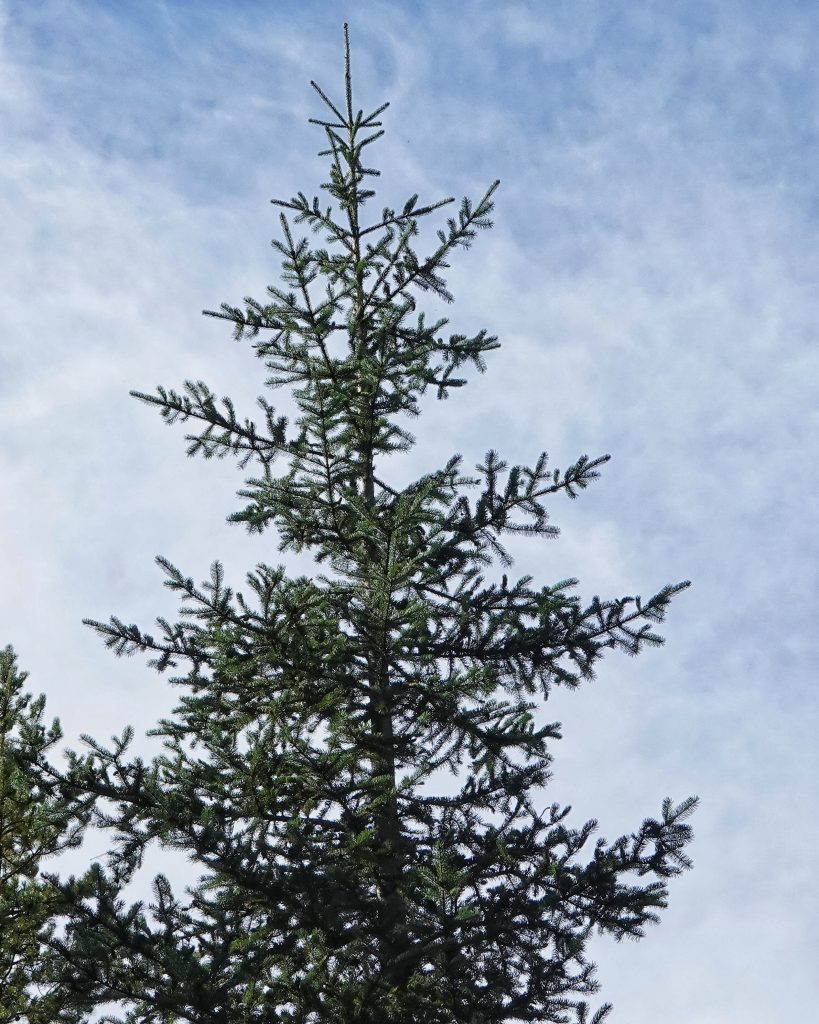
Etymology of names– Picea is from the Latin word for pitch, and was applied to several conifers. The specific epithet engelmannii honors George Engelmann (1809-84), a German American botanist who made major contributions to the knowledge of the flora of the western US. Though Engelmann ended up being the publisher of the name, when he transferred it to the genus Picea, it was in fact named for Engelmann by C.C. Parry, who called it Abies engelmannii.
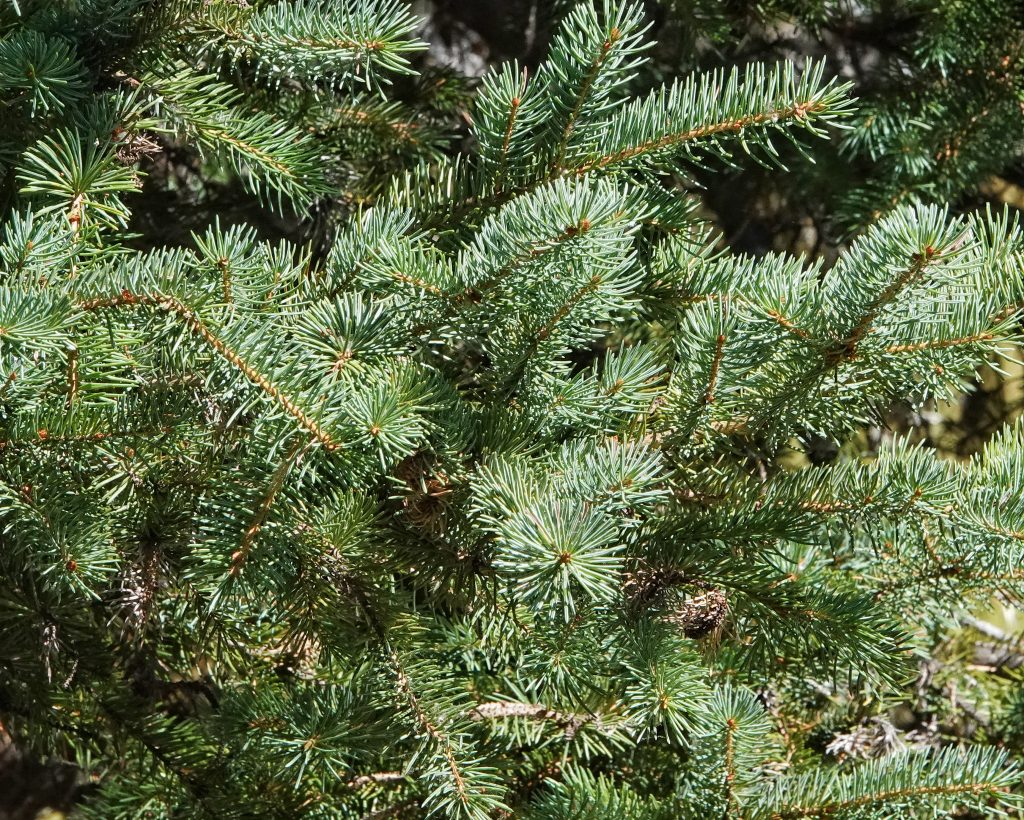
Picea engelmannii (Engelmann spruce) description
BRIT – Native American Ethnobotany Database
https://conifersociety.org/conifers/picea-engelmannii
Picea engelmannii | Landscape Plants | Oregon State University
Burke Herbarium Image Collection
Picea engelmannii (Engelmann spruce)
https://vegetation.cnps.org/alliance/43
https://en.wikipedia.org/wiki/George_Engelmann
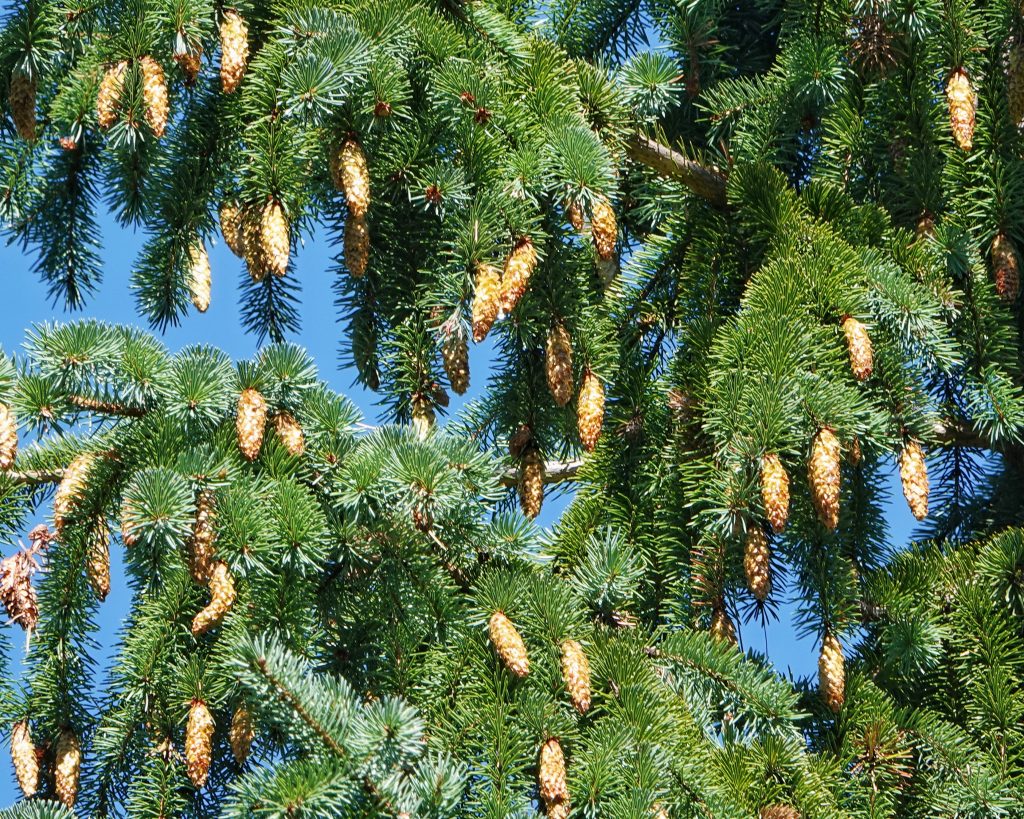
Nice article. I have some spruce on my property, and while I think they are sitka, some of them were clearly planted so I’m not absolutely sure of that ID. This article will help me. Additionally, while I agree that Engelmann Spruce are rare in the Olympics, both Robert Van Pelt (Forest Giants of the Pacific Coast) and Daniel Mathews (Cascade-Olympic Natural History) state that there are 3 populations of Engelmann in the Olympics. Some of the trees are close to records in size. So rare, but fairly significant.
Thanks for the information!
I had meant to change that because I just read that there are supposedly some on Mary’s Peak and Saddle Mtn in the Coast Range. It should be more accurate now.